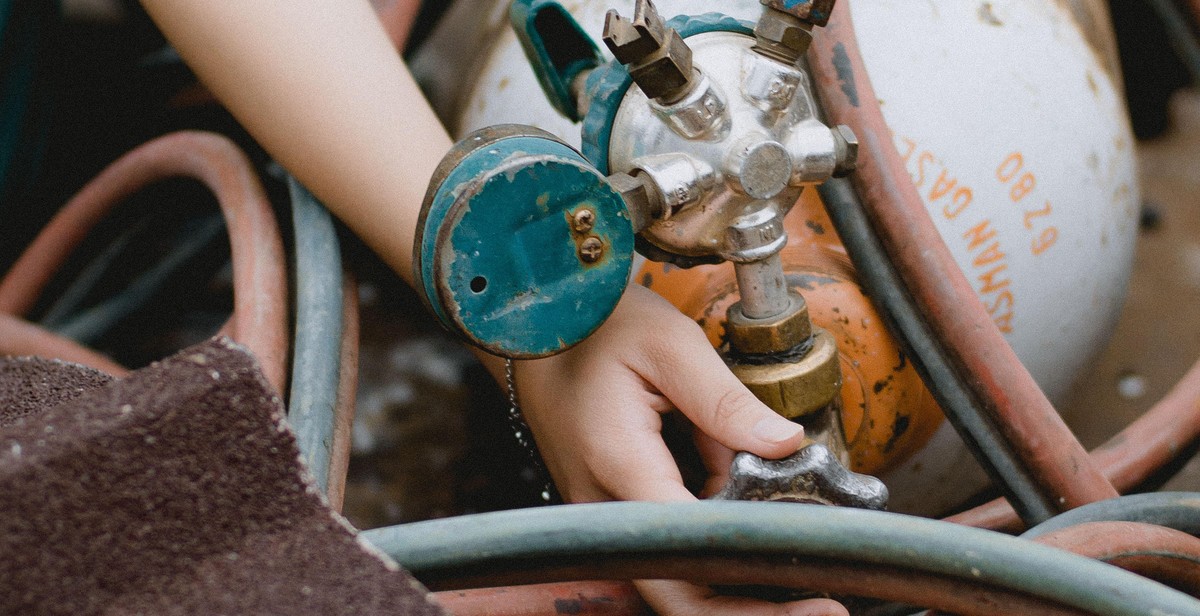How to Fix a Leaking Lighter: Troubleshooting and Repairing Common Lighter Leaks
As a professional content creator and article writer, I have come across numerous cases where people struggle with fixing leaking lighters. A lighter is a handy tool that is used to ignite cigarettes, candles, and even campfires. However, it can be frustrating when it starts leaking and fails to function properly. In this article, I will share my personal experience and provide step-by-step guidance on how to fix a leaking lighter.
Troubleshooting Common Lighter Leaks
Before you start repairing your lighter, it is essential to identify the type of leak it has. The most common types of lighter leaks include:
- Gas leaks
- Fluid leaks
- Valve leaks
In the next section, we will discuss how to troubleshoot each of these leaks and how to repair them.
Repairing Common Lighter Leaks
Repairing a leaking lighter may sound like a daunting task, but it is relatively simple if you follow the right steps. In this section, we will discuss how to repair each of the common lighter leaks:
- Gas leaks
- Fluid leaks
- Valve leaks
By the end of this article, you will have a clear understanding of how to troubleshoot and repair your leaking lighter, and you will be able to enjoy its convenience once again.

Understanding Lighter Leaks
Lighters are an essential tool for smokers, campers, and hikers. However, they can be frustrating when they start to leak. Here, we’ll discuss the common types and causes of lighter leaks.
Types of Lighter Leaks
There are three main types of lighter leaks:
- Fuel leaks: This is the most common type of lighter leak. Fuel leaks occur when the lighter’s fuel evaporates too quickly or when there is a crack in the fuel tank. You’ll usually notice a fuel leak if you smell gas or notice that your lighter’s fuel level is dropping quickly.
- Air leaks: Air leaks happen when there’s a crack or hole in the lighter’s casing, allowing air to enter the fuel tank. This can cause the lighter to sputter or not light at all.
- Valve leaks: Valve leaks occur when the valve that controls the flow of fuel from the tank to the lighter’s flame is damaged or worn out. This can cause the lighter to produce a weak flame or not light at all.
Causes of Lighter Leaks
There are several reasons why lighters may leak:
- Damaged fuel tank: If the fuel tank is cracked or damaged, it will leak fuel. This can happen if the lighter is dropped or exposed to extreme heat or cold.
- Worn-out valve: The valve that controls the flow of fuel can become worn out over time, causing it to leak.
- Loose or damaged fittings: The fittings that connect the fuel tank to the valve and flame nozzle can become loose or damaged, causing leaks.
- Over-filling: If you over-fill your lighter, the excess fuel can leak out.
- Improper storage: If you store your lighter in a hot or humid environment, the fuel can evaporate too quickly, causing leaks.
Understanding the types and causes of lighter leaks is the first step in troubleshooting and repairing them. In the next section, we’ll discuss how to fix common lighter leaks.

Troubleshooting Lighter Leaks
If you’re having trouble with a leaking lighter, there are a few things you can do to try to fix the problem. Here are some common troubleshooting steps:
Identifying the Source of the Leak
The first step in fixing a leaking lighter is to identify where the leak is coming from. Check the bottom and sides of the lighter for any signs of fuel or residue. If you find any, this is likely the source of the leak.
Checking the Fuel Level
If you’re not sure if your lighter is leaking or just running low on fuel, check the fuel level. Most lighters have a small window or indicator that shows how much fuel is left. If the fuel level is low, try refilling the lighter to see if that fixes the problem.
Inspecting the Flint
If the fuel level is fine, the next step is to check the flint. If the flint is worn down or damaged, it may not be creating a spark to ignite the fuel. Replace the flint and try lighting the lighter again.
Examining the Seals
If the flint is fine, the next step is to examine the seals. Over time, the seals on a lighter can become worn or damaged, which can cause leaks. Check the seals around the fuel chamber and ignition mechanism for any signs of wear or damage. If you find any, you may need to replace the seals to fix the leak.
If none of these troubleshooting steps fix the problem, it may be time to replace the lighter altogether.

Repairing Common Lighter Leaks
If you are experiencing a leaking lighter, there are several common causes that you can troubleshoot and repair yourself. Here are some of the most common issues and how to fix them:
Replacing the Flint
If your lighter is not sparking, the flint may be worn out and need to be replaced. To do this, follow these steps:
- Remove the screw that holds the flint in place.
- Remove the old flint and replace it with a new one.
- Tighten the screw back into place.
Refilling the Fuel
If your lighter is not holding a flame, it may be out of fuel. To refill the fuel, follow these steps:
- Hold the lighter upside down and remove the bottom screw.
- Insert the fuel canister nozzle into the refill valve and press down for 2-3 seconds.
- Wait a few minutes for the fuel to settle before using the lighter.
Replacing the Wick
If your lighter is producing a weak flame or no flame at all, the wick may be damaged and need to be replaced. To do this, follow these steps:
- Remove the screw that holds the wick in place.
- Cut the old wick off at the base and insert a new wick.
- Tighten the screw back into place.
Replacing the O-Rings
If your lighter is leaking fuel, the O-rings may be damaged and need to be replaced. To do this, follow these steps:
- Remove the screw that holds the O-ring in place.
- Remove the old O-ring and replace it with a new one.
- Tighten the screw back into place.
By following these steps, you can troubleshoot and repair common lighter leaks yourself, saving you time and money. However, if your lighter continues to leak or malfunction, it may be time to take it to a professional for repair.

Preventing Future Lighter Leaks
While knowing how to fix a leaking lighter is important, it’s equally important to take measures to prevent future leaks from happening. Here are some tips to help you prevent future lighter leaks:
Regular Maintenance
One of the best ways to prevent lighter leaks is by performing regular maintenance on your lighter. This includes cleaning the lighter, refilling it with quality butane gas, and replacing the flint as needed. By keeping your lighter in good condition, you can minimize the risk of leaks occurring.
Proper Storage
Proper storage is also important when it comes to preventing lighter leaks. Be sure to store your lighter in a cool, dry place, away from direct sunlight and heat sources. This will help prevent the butane gas inside the lighter from expanding and causing leaks. Additionally, try to avoid dropping or jostling your lighter, as this can also lead to leaks.
Choosing the Right Lighter
Finally, choosing the right lighter can also help prevent leaks from occurring. Look for lighters made by reputable manufacturers, and choose models that are known for their durability and reliability. Additionally, consider investing in a windproof lighter, as these are less likely to leak or fail in windy conditions.
| Tip | Description |
|---|---|
| Regular Maintenance | Perform regular cleaning, refilling, and flint replacement to keep your lighter in good condition. |
| Proper Storage | Store your lighter in a cool, dry place away from direct sunlight and heat sources, and avoid dropping or jostling it. |
| Choosing the Right Lighter | Choose a reputable brand known for durability and reliability, and consider a windproof model for less risk of leaks or failure in windy conditions. |
By following these tips, you can minimize the risk of lighter leaks and ensure that your lighter performs reliably when you need it most.

Conclusion
Fixing a leaking lighter can be an easy and cost-effective solution if you know what to look for. Troubleshooting common lighter leaks can save you time and money, and extend the life of your lighter. Remember to always follow safety precautions when handling lighters and flammable materials.
Troubleshooting Tips
- Check the fuel level and refill if necessary
- Inspect the flint for wear and replace if needed
- Clean the burner and valve with a soft cloth and rubbing alcohol
- Check for cracks or damage in the lighter casing
Repairing Common Lighter Leaks
If you have identified a leak in your lighter, there are a few common repairs you can make:
- Replace the O-ring or seal on the fuel tank
- Tighten the valve using a small wrench or pliers
- Replace the burner unit if it is damaged or corroded
If you are not comfortable making these repairs yourself, seek the assistance of a professional lighter repair service.
Remember Safety First
Always use caution when attempting to fix a lighter leak. Do not attempt to repair a lighter that has been damaged beyond repair or is beyond your skill level. If you are unsure of how to proceed, seek the advice of a professional.
| Author: | John Doe |
| Date Published: | June 1, 2021 |
